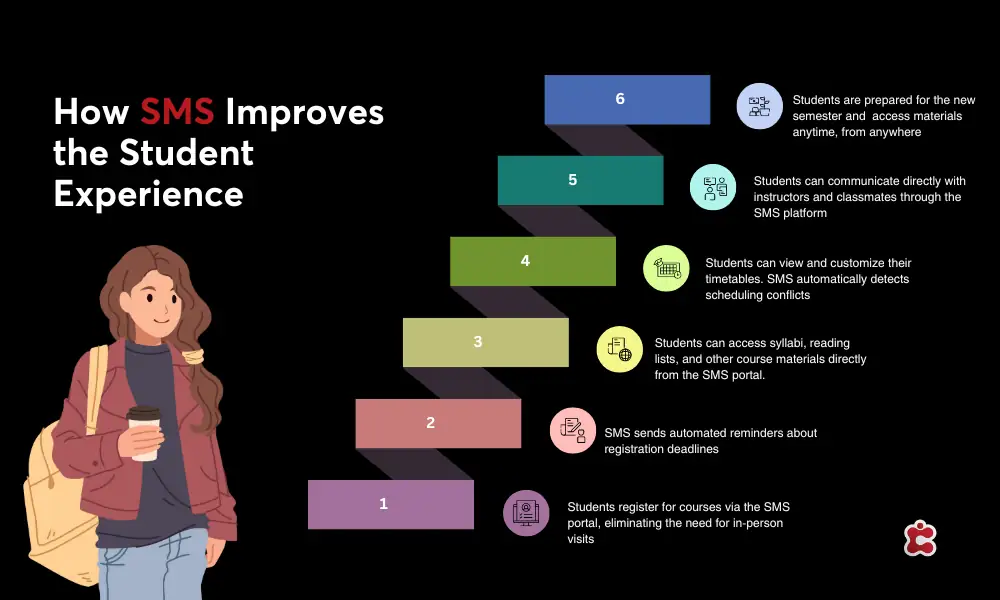Academic planning is a vital process in higher education. It’s how institutions map out what courses to offer, when to offer them, and how they fit into broader program goals and student pathways. When done well, it keeps everything on track, including balanced faculty workloads to smooth student progression. But behind the scenes, it’s anything but simple. Academic planning involves layers of coordination across curriculum design, scheduling, staffing, budgeting, and compliance.
In today’s fast-paced, data-rich environment, relying on spreadsheets and siloed systems just doesn’t cut it. Higher ed teams need accurate, connected information and tools that support collaboration and quick decision-making.
A School Management System (SMS) is a robust platform that brings structure and intelligence to the academic planning process. With features that support automation, real-time updates, and seamless coordination between departments, an SMS empowers institutions to plan smarter and adapt faster. We’ll explore how school management software supports each stage of academic planning.

Academic Planning: A Complex, Multi-Departmental Operation
Academic planning isn’t a one-department task. It’s a multi-layered, campus-wide operation that involves input from academic affairs, registrars, department heads, IT teams, and beyond. At the heart of it are a few key components: curriculum design, program structure, course scheduling, resource allocation, and compliance. Each of these areas plays a critical role in making sure students receive the education they signed up for and that institutions stay on track with their academic goals.
But bringing all of this together is no small feat. Many institutions still rely on outdated systems or disconnected tools to manage the process. Data often lives in silos, which means teams can’t always access the information they need when they need it. Manual workflows lead to delays and errors. Version control becomes a challenge when different departments are working on various files. And coordinating across departments takes more time and effort than it should.
The result? Missed opportunities, scheduling conflicts, and unnecessary stress for staff and students alike. To plan effectively, higher ed institutions need more than just good intentions. They need a connected system that brings everything into one place.
1. Centralizes Data Management
Good planning starts with good data. School Management System makes a big difference by centralizing all academic data. It gives institutions a single source of truth that everyone can rely on.
Instead of chasing down numbers or working with outdated files, academic leaders have access to real-time, accurate information. Whether it’s tracking course enrollments, identifying curriculum gaps, or forecasting student demand, having everything in one place makes it easier to plan with confidence. It also supports smarter decisions about course offerings, program adjustments, and long-term academic strategy.
This level of visibility is especially useful for academic boards, department heads, and IT teams. Everyone can access the same data, at the same time, without relying on back-and-forth emails or manual updates. With the right tools in place, institutions can move from reactive to proactive planning.
2. Streamlined Course and Curriculum Management
Programs evolve, course requirements shift, and academic standards change.. A School Management System makes this process much more manageable by offering built-in tools for designing and revising course structures, setting prerequisites, and mapping out student pathways across different programs.
With an SMS, updating a course or launching a new program doesn’t mean starting from scratch. Institutions can manage multiple versions of programs, track changes over time, and ensure that every update aligns with internal policies and external accreditation requirements. Managing ECTS credit allocations and checking for compliance becomes much more straightforward when the system guides you through the process step by step.
One of the biggest advantages is role-based access. Academic teams can work together without stepping on each other’s toes. Department heads, curriculum designers, and compliance officers each have access to the information and tools they need—nothing more, nothing less. This creates a collaborative, efficient environment where curriculum planning becomes a shared responsibility.
3. Intelligent Timetabling and Resource Scheduling
Manually creating timetables or using disconnected systems often results in scheduling conflicts, double-booked rooms, and last-minute changes. With an SMS, you can set your constraints (like instructor availability, classroom capacity, and program requirements) and let the system generate optimal timetables based on that input. It takes the guesswork out of scheduling and significantly reduces human error. You’re far less likely to end up with two classes booked in the same room or a student double-scheduled for lectures.
Another major advantage is that the timetable isn’t created in isolation. It aligns with real-time student course registrations and academic progression plans. This means students get schedules that support their learning journey, while faculty and facilities are used efficiently. Plus, if changes need to be made, the system can update schedules quickly without disrupting everything else. It’s a smarter, more responsive way to manage timetabling, and it frees up staff to focus on strategy, not spreadsheets.
4. Budget and Resource Forecasting Support
In higher education, academic planning and financial planning go hand in hand. You can’t build a strong course catalog or expand a program without knowing if you have the staff, space, and budget to support it. A School Management System gives access to real-time data, institutions can forecast resource needs more accurately and make better-informed decisions about staffing, infrastructure, and budget allocation.
An SMS helps academic and finance teams work from the same set of data. When departments plan new courses or adjust programs, they can immediately see how those changes impact staffing loads, classroom usage, and equipment needs. This makes it easier to align academic goals with available resources and funding.
It also supports scenario planning. What if enrollment in a certain program increases by 20%? What if a new course requires specialized labs or additional instructors? With the right data at your fingertips, you can test different scenarios and build flexible plans that adapt to change.
5. Future-Proofs Academic Strategy
Academic planning is never static. A modular, cloud-based School Management System equips higher education institutions with the flexibility to adapt their planning tools as academic strategies evolve. With modular design, you can tailor the platform to your exact needs, from curriculum development and course scheduling to faculty planning and resource forecasting.
Cloud architecture adds another layer of agility. Multi-campus and hybrid institutions can access centralized planning data in real time, ensuring consistency across departments and locations. Everyone—from academic deans to IT staff—can collaborate seamlessly, even when working remotely.
What truly makes an SMS future-proof is its ability to integrate with core systems like LMS, SIS, and ERP platforms. This creates a connected academic planning environment where accurate, real-time data drive decisions. For institutions looking to stay agile and strategic, a modular, cloud-based SMS is essential.
Classter Supports End-to-End Academic Planning
Classter brings academic planning under one roof with powerful, purpose-built modules. From Academic Management and Curriculum Planning to Timetabling and Advanced Reporting, each module is designed to simplify complex workflows across departments. Institutions can create and manage program structures, optimize schedules, and generate compliance-ready reports—all within one unified platform. With real-time data and role-based access, academic teams can plan with greater accuracy and agility.
Ready to see how Classter supports strategic academic planning from start to finish? Explore a demo or check out our latest case study to learn more.
FAQ’s
School Management Systems enhance academic planning by centralizing data, automating workflows, and enabling real-time collaboration across departments. This leads to smarter course scheduling, accurate forecasting, and better alignment between programs and institutional goals.
Yes. Most modern SMS platforms offer tools for designing, updating, and mapping curriculum structures. This ensures alignment with academic standards and allows easy tracking of changes across programs and credit requirements.
Classter offers a modular system that supports every stage of academic planning—from curriculum design to scheduling and compliance. Its unified platform helps institutions make smarter, faster decisions.

